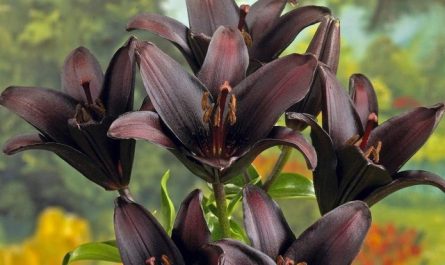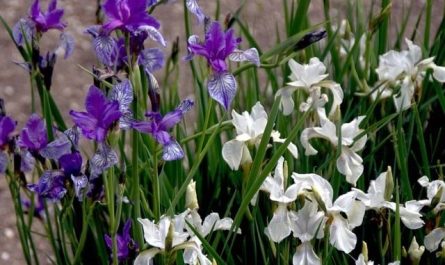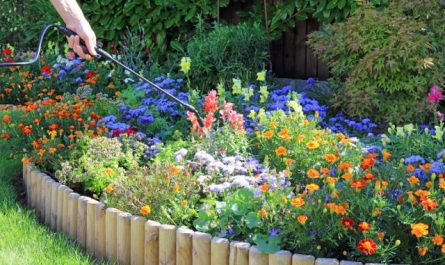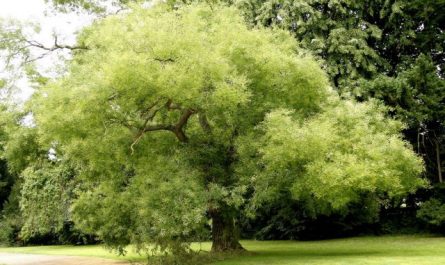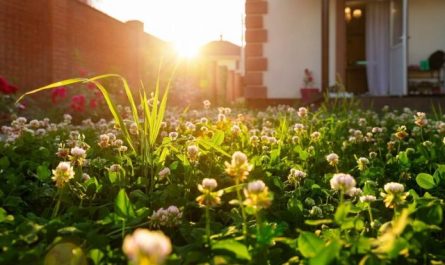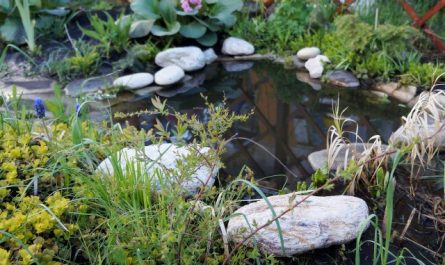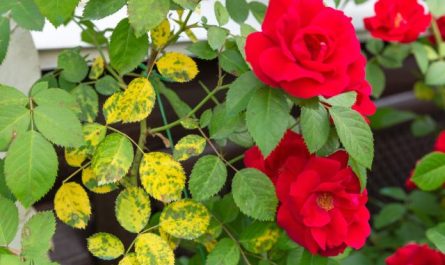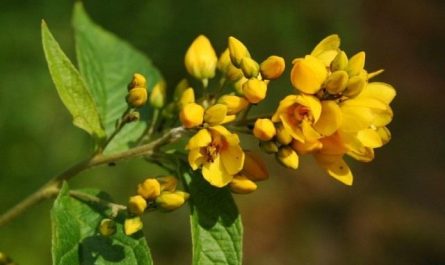The dark, dull crimson color is associated with something demonic by many. Perhaps this is what gave the breeder the reason to name one of the most beautiful varieties of the viburnum-leaved bladder senna Diabolo.
In the gardens of central Russia, there are two similar species of this plant: Physocarpus amurensis and Physocarpus opulifolius. Both are bushes up to 2,5 m high, with many tightly arranged, arched-hanging shoots. The leaves are 3-5-lobed, resembling the leaves of viburnum in size and shape. The flowers are simple, white, with numerous noticeable stamens, in dense, hemispherical inflorescences up to 5-7 cm in diameter, abundantly covering the branches at the beginning of summer. The fruits are also attractive – strongly swollen leaflets that turn red when ripe. The bark of old bushes peels and flakes off in longitudinal stripes (one of my friends was even scared one spring: she thought her bush had died). The shape of the bush is hemispherical.

The bladder senna is more attractive, and also has several decorative forms with different leaf colors. Diabolo belongs to the so-called purple-leaved varieties.
This property is found in many plants. Scientists explain it by shifts in the synthesis of chlorophyll. Similar processes occur in autumn, when the leaves acquire red, yellow, and purple hues. The most famous purple forms are those of hazel, barberry, maple, cherry plum, and of herbaceous plants – bugleweed, heuchera, and loosestrife. But this does not mean that they are all the same. Hazel has brownish-purple foliage, while barberry leaves are dark brown, sometimes to the point of blackness. Diabolo has no rivals in terms of the brightness of its color. At different times and in different parts of the crown, the color of the leaves varies from bluish-violet to red-brown and carmine-red with many halftones.
Diabolo has a great future in our gardens, and not only because of the plant’s striking appearance. It is frost-resistant, undemanding to soils, and most importantly, resistant to all kinds of fungal attacks, from which purple barberries and maples suffer so much. Diabolo is less spreading than the main species, more directed upwards. It grows quickly, tolerates pruning well, loves moisture and sun, and is resistant to urban pollution.
In decoration, it is an excellent solitaire, looks good against the background of ordinary greenery, on the lawn, in compositions with low-growing and medium-growing conifers and shrubs. It can be used to decorate the background of a composition, planted as an accent plant in the center of a carpet flowerbed. Neatly trimmed hedges made of Diabolo look especially impressive, and they are also a wonderful background for other plants. The variety is easy to cultivate, and the fact that this bladderwort is not often found in our gardens is explained only by its recent appearance in Russia.

An open place is chosen for planting; the plant prefers deeply cultivated moisture-intensive loams and low groundwater levels. It tolerates transplantation well, and once established, it quickly grows a crown and blooms from the age of 4-5. Although Diabolo is undemanding to soils, moderate fertilization improves its decorativeness. The main fertilizer (rotted organic matter, 5-10 kg, and combined NPK fertilizer, 50-70 g / sq.m) is added when filling the planting hole. In the future, it is enough to add fertilizer to the trunk circle once a year in the spring. The bladder senna is watered only during drought under the root, once a week or a little less often.
Species bladderworts are propagated by seeds, sowing them immediately after collection to a depth of 2-3 cm. Varietal plants – by cuttings. I propagated Diabolo by green cuttings from mid-June to early August. Even the tops of the shoots take root. The cuttings remain in the cuttings until spring, then I planted them and grew them for another year.
A separate issue is pruning and shaping. All bladder senna have high bud awakening after pruning, which allows the plants to tolerate 2-3-fold pruning of growing shoots well. Pruning begins in the second year, shortening the main shoots. The formation of single bushes is aimed at creating a more compact dense crown. It is created by pruning the tops of protruding shoots, restraining unwanted growth.

For hedges, Diabolo bushes are planted in a checkerboard pattern in two rows (30 cm between rows, 40 cm in a row). The hedge can be rectangular, about 1 m high, or limited only on the sides. In this case, its height will reach 1,8-2,3 m.
One plant, of course, does not make a garden, but with such “components” as Diabolo, it becomes both harmonious and graceful.
